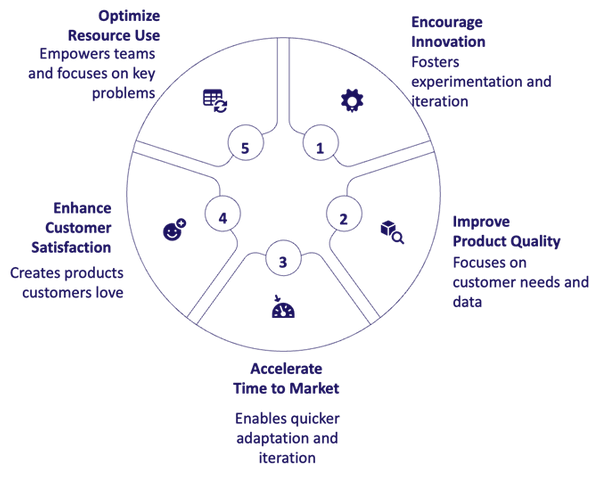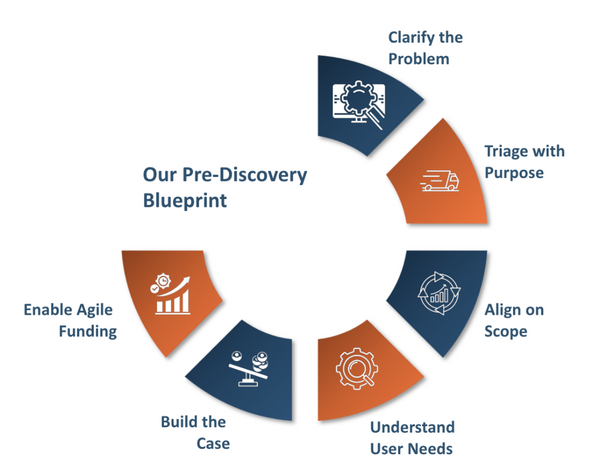Central Government Programme activities
The techUK Central Government Programme provides a forum for government to engage with tech suppliers. We advocate for the govtech sector, evangelise tech as a solution to public sector challenges, facilitate market engagement, and help make the public sector an easier market to operate in. Visit the programme page here.
Call for contributions: Building the Smarter State Week 2025
From Monday 8 September to Friday 12 September, we will be running Building the Smarter State Week in the run up to our annual flagship Building the Smarter State Conference.
Building the Smarter State 2025 10 September
Building the Smarter State is techUK’s flagship public services conference and the go-to event for public sector digital leaders. The annual event welcomes over 200 senior leaders and decisions makers from across the public sector and the technology industry to showcase how technology is shaping today's and tomorrow’s public services.
Innovation in Procurement – New Approaches to Public Sector Resilience
Join us for a forward-looking conversation on how the UK public sector and public buying organisations can harness procurement to build a more secure, sustainable, and responsive future – and deliver high-impact public services.
Upcoming events
CCS Public Sector Software Solutions (RM6396) Framework T&C's Market Engagement event
Online WebinarInnovation in Procurement – New Approaches to Public Sector Resilience
Online WebinarCCS Public Sector Software Solutions (RM6396) Framework T&C's Market Engagement event
Online WebinarLatest news and insights
Learn more and get involved
Central Government updates
Sign-up to get the latest updates and opportunities from our Central Government programme.
Here are the five reasons to join the Central Government Programme
Join techUK groups
techUK members can get involved in our work by joining our groups, and stay up to date with the latest meetings and opportunities in the programme.
Become a techUK member
Our members develop strong networks, build meaningful partnerships and grow their businesses as we all work together to create a thriving environment where industry, government and stakeholders come together to realise the positive outcomes tech can deliver.
Meet the team

Heather Cover-Kus
Head of Central Government Programme, techUK

Heather Cover-Kus
Head of Central Government Programme, techUK
Heather is Head of Central Government Programme at techUK, working to represent the supplier community of tech products and services to Central Government.
Prior to joining techUK in April 2022, Heather worked in the Economic Policy and Small States Section at the Commonwealth Secretariat. She led the organisation’s FinTech programme and worked to create an enabling environment for developing countries to take advantage of the socio-economic benefits of FinTech.
Before moving to the UK, Heather worked at the Office of the Prime Minister of The Bahamas and the Central Bank of The Bahamas.
Heather holds a Graduate Diploma in Law from BPP, a Masters in Public Administration (MPA) from LSE, and a BA in Economics and Sociology from Macalester College.
- Email:
- [email protected]
- LinkedIn:
- https://www.linkedin.com/in/heather-cover-kus-ba636538

Ellie Huckle
Programme Manager, Central Government, techUK

Ellie Huckle
Programme Manager, Central Government, techUK
Ellie joined techUK in March 2018 as a Programme Assistant to the Public Sector team and now works as a Programme Manager for the Central Government Programme.
The programme represents the supplier community of technology products and services in Central Government – in summary working to make Government a more informed buyer, increasing supplier visibility in order to improve their chances of supplying to Government Departments, and fostering better engagement between the public sector and industry. To find out more about what we do, how we do this and how you can get involved – make sure to get in touch!
Prior to joining techUK, Ellie completed Sixth Form in June 2015 and went on to work in Waitrose, moved on swiftly to walking dogs and finally, got an office job working for a small local business in North London, where she lives with her family and their two Bengal cats Kai and Nova.
When she isn’t working Ellie likes to spend time with her family and friends, her cats, and enjoys volunteering for diabetes charities. She has a keen interest in writing, escaping with a good book and expanding her knowledge watching far too many quiz shows!
- Email:
- [email protected]
- Phone:
- 020 7331 2015
- Twitter:
- @techUK,@techUK
- Website:
- www.techuk.org,www.techuk.org
- LinkedIn:
- https://bit.ly/3mtQ7Jx,https://bit.ly/3mtQ7Jx

Charles Bauman
Junior Programme Manager - Central Government, techUK

Charles Bauman
Junior Programme Manager - Central Government, techUK
Charles Bauman is a Junior Programme Manager in the Central Government Programme at techUK.
He supports the programme’s mission to represent the technology supplier community to the UK government and advocate for digital innovation to address public sector challenges. Charles helps facilitate market engagement, foster partnerships, and ensure that tech suppliers and the government work collaboratively to improve outcomes, deliver value for money, and enhance public services for citizens.
Before joining techUK, Charles gained significant experience in research, analysis, and strategic advisory roles. At H/Advisors Cicero, he specialised in public affairs and corporate communications, while at Verdantix, he supported sustainability research and advisory projects, focusing on regulatory and environmental challenges.
Charles holds an MSc in Theory and History of International Relations from the London School of Economics and Political Science (LSE) and an MA in Medieval History from King’s College London.
Charles enjoys volunteering with a think tank, reading, hiking, and spending time with his dog and family outside of work.
- Email:
- [email protected]
- Website:
- www.techuk.org
- LinkedIn:
- https://www.linkedin.com/in/charles-bauman-75712016b/

Francesca Richiusa
Programme Team Assistant for Public Sector Markets, techUK

Francesca Richiusa
Programme Team Assistant for Public Sector Markets, techUK
Fran serves as the Programme Team Assistant within techUK’s Public Sector Market Programmes, where she is responsible for delivering comprehensive team support, managing administrative functions, and fostering strong relationships with members.
Prior to joining techUK in May 2025, Fran built a meaningful career in the charitable and local government sectors. She worked extensively with both victims and perpetrators of crime, and notably led the coordination of Domestic Homicide Reviews across Surrey—an initiative aimed at identifying lessons and preventing future incidents of domestic abuse.
Outside of work, Fran is an avid traveller and a proud cat mum who enjoys unwinding with her feline companions.
- Email:
- [email protected]
- Website:
- www.techuk.org/
- LinkedIn:
- https://www.linkedin.com/in/francesca-richiusa/








